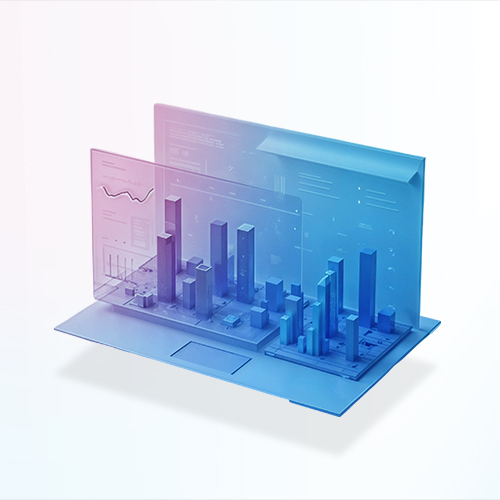
What Is IT Risk Management? A Guide for Businesses

IT risk management refers to the systematic process of identifying, assessing, and mitigating risks that affect an organization’s IT systems and digital infrastructure. These risks can stem from human error, outdated equipment, cyber threats, or natural disasters. The goal is to ensure business continuity and reduce the potential for loss or disruption.
Defining IT Risk and Its Impact
IT risk is the probability of an adverse event when a threat—such as a cyberattack or internal error—exploits a vulnerability in an IT system. The result? Operational downtime, data breaches, financial loss, and reputational damage.
The IT risk equation is a helpful starting point:
Trouble × Vulnerability × Resource = Risk
For instance, if your systems are misconfigured and lack proper defenses, you’re more exposed to threats, raising your overall IT risk. Effective IT risk management solutions help lower this risk by proactively managing each component of this equation.
Why IT Risk Management Matters
In today’s hyper-connected world, the need for a structured IT risk management process is more critical than ever. As organizations embrace cloud computing, remote work, and digital transformation, they’re also increasing their exposure to new threats. Without proper risk controls, even small vulnerabilities can lead to large-scale disruptions.
Risk management is not just about security—it’s also about compliance. Adopting reliable IT risk management software helps organizations meet regulatory standards like GDPR and maintain customer trust.
How to Get Started Without Burning Your Budget Key Components of IT Risk Assessment
Most startups make one of two mistakes: going tooA thorough risk assessment is the backbone of a solid IT risk strategy. Here’s how it works: big too early, or thinking AI is out of reach altogether. Here’s how to get it right.
1. Identify Critical Assets
Start by listing assets that are vital to business operations, databases, servers, customer data, apps, and more. Prioritize them based on legal, operational, or financial value.
2. Assess Threats and Vulnerabilities
Common threats include malware, insider threats, and natural disasters. Vulnerabilities may involve outdated software, weak access controls, or unpatched systems.
3. Evaluate and Prioritize Risks
Rank risks based on likelihood and impact. Many enterprise risk management SaaS platforms automate this step, offering actionable insights for high-risk areas.
4. Apply Mitigation Strategies
Mitigation includes:
- Avoidance: Skip high-risk activities.
- Modification: Improve defenses with firewalls, antivirus, and access controls.
- Transfer: Use third-party providers (e.g., cloud backups) to share risk.
- Acceptance: Acknowledge and tolerate low-impact risks as part of business continuity.
5. Document and Review
Maintain comprehensive, audit-ready documentation that details all identified threats, associated vulnerabilities, mitigation strategies, and implemented control measures. This documentation should include risk registers, impact assessments, incident response actions, and compliance checklists. Keeping records transparent and up to date is crucial, not only for internal governance and training but also for regulatory audits and certifications. Establish a review cadence (monthly or quarterly) to revisit the risk landscape, integrate new threat intelligence, and adapt your IT risk management framework to emerging trends and business changes.
IT Risk Management Best Practices
Modern risk management SaaS platforms bring agility and real-time visibility to your IT risk efforts. These cloud-based tools offer centralized dashboards that consolidate risk data, generate automated alerts, and allow stakeholders to monitor system health in real time. Advanced platforms often include AI-driven risk scoring, threat modeling, and integration with other enterprise systems like ticketing, SIEM, and compliance tools. With their built-in reporting features, teams can easily generate audit-ready documents and ensure alignment with standards like ISO 27001, NIST, or GDPR, without manual overhead.
Perform IT Asset Management
A solid risk management program starts with a clear understanding of your asset landscape. Implementing automated IT asset management tools allows organizations to maintain a live inventory of hardware, software, licenses, endpoints, and data flows. These tools help identify outdated systems, unauthorized software, license expirations, and potential shadow IT practices, all of which pose security and compliance risks. By aligning asset performance and lifecycle data with risk metrics, organizations can proactively allocate resources, schedule updates, and phase out vulnerable systems before they become attack vectors.
Strengthen Cybersecurity
Cybersecurity forms the backbone of IT risk management. Move beyond basic defenses by integrating Security Information and Event Management (SIEM) systems that provide real-time analysis of security alerts, anomaly detection, and event correlation across the enterprise. Complement these with endpoint detection and response (EDR), data loss prevention (DLP), and zero-trust architectures. Incorporate regular penetration testing, phishing simulations, and vulnerability assessments to keep security layers adaptive and robust. The goal is not just to block threats but to anticipate and respond intelligently, reducing both incident frequency and severity.
Enforce Access Controls
Unauthorized access is one of the leading causes of data breaches. Implement Role-Based Access Control (RBAC) and Least Privilege Principles to ensure users only have access to the resources necessary for their roles. Use Multi-Factor Authentication (MFA), single sign-on (SSO), and centralized identity governance systems to secure user access and monitor behavior. Modern access control solutions also provide session logging, real-time alerts for suspicious access attempts, and compliance reports that demonstrate adherence to data protection regulations. These controls are essential not only for preventing internal threats but also for minimizing external attack surfaces.
Improve Risk Communication
Effective risk management isn’t just technical—it’s organizational. Establish open communication channels between IT, compliance, leadership, and department heads to ensure everyone understands the nature, scope, and urgency of IT risks. Use risk dashboards, periodic briefings, and incident response simulations to keep teams informed and prepared. Include communication protocols in your risk management policy to ensure clarity during crisis events. Internally, this fosters a risk-aware culture; externally, it builds stakeholder confidence and reduces reputational damage in the event of an incident.
How Our Grant Engine Case Study Embodies IT Risk Management Principles
The transformation of Grant Engine by Techverx is a prime example of IT risk management done right. Faced with a platform plagued by manual processes, high error rates, inefficient feedback loops, and poor version control, Techverx stepped in to assess and mitigate core IT risks that were slowing down grant approvals and compromising submission accuracy. By applying principles outlined in IT risk management—identifying critical assets, automating vulnerability-prone workflows, and implementing intelligent document review systems powered by PDF parsers and LLM models—Techverx effectively turned a struggling tool into a scalable, resilient SaaS product. Their solution not only improved submission speed and team productivity but also addressed key areas of risk, such as compliance, data integrity, and operational continuity. This proactive, system-wide intervention exemplifies how Techverx doesn’t just build products—they rescue, re-architect, and future-proof them using proven IT risk management strategies.
Find this case study at: https://www.techverx.com/case-studies/
Techverx: Turning IT Risk Into Opportunity
In today’s rapidly evolving digital landscape, IT risk management is no longer a defensive strategy, it’s a growth enabler. Businesses that proactively identify vulnerabilities, implement robust controls, and leverage automation are better positioned to prevent costly disruptions and build long-term resilience. At Techverx, we believe that managing IT risk isn’t just about patching gaps, it’s about engineering confidence into every layer of your digital infrastructure. From automated assessments to enterprise-ready SaaS integrations, our approach ensures that organizations can scale securely, stay compliant, and maintain trust in an unpredictable world. When IT risk is managed with foresight and precision, innovation follows.
Ready to take control of your IT risks before they become business threats? Partner with Techverx to build secure, scalable systems that are resilient by design. Whether you need help modernizing legacy workflows or implementing automated risk management solutions, our experts are here to turn complexity into clarity.
Talk to our team today and discover how Techverx can future-proof your tech.
Hiring engineers?
Reduce hiring costs by up to 70% and shorten your recruitment cycle from 40–50 days with Techverx’s team augmentation services.
Related blogs


